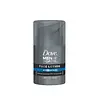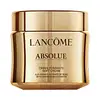What's inside
What's inside
 Key Ingredients
Key Ingredients

 Benefits
Benefits

 Concerns
Concerns

 Ingredients Side-by-side
Ingredients Side-by-side

Butyl Methoxydibenzoylmethane 2%
UV AbsorberPhenylbenzimidazole Sulfonic Acid 1.5%
UV AbsorberEthylhexyl Salicylate 5%
UV AbsorberOctocrylene 1.3%
UV AbsorberWater
Skin ConditioningGlycerin
HumectantStearic Acid
CleansingGlycol Stearate
EmollientPEG-100 Stearate
Dimethicone
EmollientTocopheryl Acetate
AntioxidantGlyceryl Stearate
EmollientPotassium Stearate
CleansingCarbomer
Emulsion StabilisingCaprylyl Glycol
EmollientCetyl Alcohol
EmollientXanthan Gum
EmulsifyingParfum
MaskingStearamide Amp
BHT
AntioxidantPhenoxyethanol
PreservativeDisodium EDTA
Butyl Methoxydibenzoylmethane 2%, Phenylbenzimidazole Sulfonic Acid 1.5%, Ethylhexyl Salicylate 5%, Octocrylene 1.3%, Water, Glycerin, Stearic Acid, Glycol Stearate, PEG-100 Stearate, Dimethicone, Tocopheryl Acetate, Glyceryl Stearate, Potassium Stearate, Carbomer, Caprylyl Glycol, Cetyl Alcohol, Xanthan Gum, Parfum, Stearamide Amp, BHT, Phenoxyethanol, Disodium EDTA
Water
Skin ConditioningOctocrylene
UV AbsorberHydrogenated Polyisobutene
EmollientEthylhexyl Salicylate
UV AbsorberAlcohol Denat.
AntimicrobialDimethicone
EmollientGlycerin
HumectantButyl Methoxydibenzoylmethane
UV AbsorberBis-PEG-18 Methyl Ether Dimethyl Silane
EmollientOctyldodecanol
EmollientCetearyl Alcohol
EmollientPEG-20
HumectantPetrolatum
EmollientButyrospermum Parkii Butter
Skin ConditioningCetyl Alcohol
EmollientHydroxypropyl Tetrahydropyrantriol
Skin ConditioningPhenoxyethanol
PreservativePropylene Glycol
HumectantButylene Glycol
HumectantZea Mays Oil
EmulsifyingPrunus Armeniaca Kernel Oil
MaskingTocopheryl Acetate
AntioxidantPassiflora Edulis Seed Oil
EmollientOryza Sativa Bran Oil
EmollientCetearyl Glucoside
EmulsifyingCaprylyl Glycol
EmollientPolyacrylamide
PEG-100 Stearate
Glyceryl Stearate
EmollientXanthan Gum
EmulsifyingCapryloyl Salicylic Acid
ExfoliatingAcrylates/C10-30 Alkyl Acrylate Crosspolymer
Emulsion StabilisingC13-14 Isoparaffin
EmollientDisodium EDTA
Dimethiconol
EmollientPentylene Glycol
Skin ConditioningLaureth-7
EmulsifyingPentaerythrityl Tetra-Di-T-Butyl Hydroxyhydrocinnamate
AntioxidantJasminum Officinale Extract
MaskingSodium Hydroxide
BufferingOryza Sativa
Limonene
PerfumingAdenosine
Skin ConditioningHydrolyzed Soy Protein
HumectantHydrolyzed Linseed Extract
Skin ConditioningLinalool
PerfumingMalus Domestica Fruit Cell Culture Extract
Skin ConditioningCitronellol
PerfumingCoumarin
PerfumingCI 19140
Cosmetic Colorant2-Oleamido-1,3-Octadecanediol
Skin ConditioningCitral
PerfumingCI 14700
Cosmetic ColorantParfum
MaskingWater, Octocrylene, Hydrogenated Polyisobutene, Ethylhexyl Salicylate, Alcohol Denat., Dimethicone, Glycerin, Butyl Methoxydibenzoylmethane, Bis-PEG-18 Methyl Ether Dimethyl Silane, Octyldodecanol, Cetearyl Alcohol, PEG-20, Petrolatum, Butyrospermum Parkii Butter, Cetyl Alcohol, Hydroxypropyl Tetrahydropyrantriol, Phenoxyethanol, Propylene Glycol, Butylene Glycol, Zea Mays Oil, Prunus Armeniaca Kernel Oil, Tocopheryl Acetate, Passiflora Edulis Seed Oil, Oryza Sativa Bran Oil, Cetearyl Glucoside, Caprylyl Glycol, Polyacrylamide, PEG-100 Stearate, Glyceryl Stearate, Xanthan Gum, Capryloyl Salicylic Acid, Acrylates/C10-30 Alkyl Acrylate Crosspolymer, C13-14 Isoparaffin, Disodium EDTA, Dimethiconol, Pentylene Glycol, Laureth-7, Pentaerythrityl Tetra-Di-T-Butyl Hydroxyhydrocinnamate, Jasminum Officinale Extract, Sodium Hydroxide, Oryza Sativa, Limonene, Adenosine, Hydrolyzed Soy Protein, Hydrolyzed Linseed Extract, Linalool, Malus Domestica Fruit Cell Culture Extract, Citronellol, Coumarin, CI 19140, 2-Oleamido-1,3-Octadecanediol, Citral, CI 14700, Parfum
 Reviews
Reviews

Ingredients Explained
These ingredients are found in both products.
Ingredients higher up in an ingredient list are typically present in a larger amount.
Also known as Avobenzone, this ingredient is a chemical sunscreen filter that provides protection in the UV-A range.
Avobenzone is globally approved and is the most commonly used UV-A filter in the world.
Studies have found that avobenzone becomes ineffective when exposed to UV light (it is not photostable; meaning that it breaks down in sunlight). Because of this, formulations that include avobenzone will usually contain stabilizers such as octocrylene.
However, some modern formulations (looking at you, EU!) are able to stabilize avobenzone by coating the molecules.
Avobenzone does not protect against the UV-B range, so it's important to check that the sunscreen you're using contains other UV filters that do!
The highest concentration of avobenzone permitted is 3% in the US, and 5% in the EU.
Learn more about Butyl MethoxydibenzoylmethaneCaprylyl Glycol is a humectant and emollient, meaning it attracts and preserves moisture.
It is a common ingredient in many products, especially those designed to hydrate skin. The primary benefits are retaining moisture, skin softening, and promoting a healthy skin barrier.
Though Caprylyl Glycol is an alcohol derived from fatty acids, it is not the kind that can dry out skin.
This ingredient is also used as a preservative to extend the life of products. It has slight antimicrobial properties.
Learn more about Caprylyl GlycolCetyl Alcohol is a fatty alcohol. Fatty Alcohols are most often used as an emollient or to thicken a product.
Its main roles are:
Though it has "alcohol" in the name, it is not related to denatured alcohol or ethyl alcohol.
The FDA allows products labeled "alcohol-free" to have fatty alcohols.
Learn more about Cetyl AlcoholDimethicone is a type of synthetic silicone created from natural materials such as quartz.
What it does:
Dimethicone comes in different viscosities:
Depending on the viscosity, dimethicone has different properties.
Ingredients lists don't always show which type is used, so we recommend reaching out to the brand if you have questions about the viscosity.
This ingredient is unlikely to cause irritation because it does not get absorbed into skin. However, people with silicone allergies should be careful about using this ingredient.
Note: Dimethicone may contribute to pilling. This is because it is not oil or water soluble, so pilling may occur when layered with products. When mixed with heavy oils in a formula, the outcome is also quite greasy.
Learn more about DimethiconeDisodium EDTA plays a role in making products more stable by aiding other preservatives.
It is a chelating agent, meaning it neutralizes metal ions that may be found in a product.
Disodium EDTA is a salt of edetic acid and is found to be safe in cosmetic ingredients.
Learn more about Disodium EDTAEthylhexyl Salicylate is an organic compound used to block UV rays. It primarily absorbs UVB rays but offers a small amount of UVA protection as well.
Commonly found in sunscreens, Ethylhexyl Salicylate is created from salicylic acid and 2-ethylhexanol. You might know salicylic acid as the effective acne fighter ingredient and BHA.
The ethylhexanol in this ingredient is a fatty alcohol and helps hydrate your skin, similar to oils. It is an emollient, which means it traps moisture into the skin.
According to manufacturers, Ethylhexyl Salicylate absorbs UV wavelength of 295-315 nm, with a peak absorption at 307-310 nm. UVA rays are linked to long term skin damage, such as hyperpigmentation. UVB rays emit more energy and are capable of damaging our DNA. UVB rays cause sunburn.
Learn more about Ethylhexyl SalicylateGlycerin is already naturally found in your skin. It helps moisturize and protect your skin.
A study from 2016 found glycerin to be more effective as a humectant than AHAs and hyaluronic acid.
As a humectant, it helps the skin stay hydrated by pulling moisture to your skin. The low molecular weight of glycerin allows it to pull moisture into the deeper layers of your skin.
Hydrated skin improves your skin barrier; Your skin barrier helps protect against irritants and bacteria.
Glycerin has also been found to have antimicrobial and antiviral properties. Due to these properties, glycerin is often used in wound and burn treatments.
In cosmetics, glycerin is usually derived from plants such as soybean or palm. However, it can also be sourced from animals, such as tallow or animal fat.
This ingredient is organic, colorless, odorless, and non-toxic.
Glycerin is the name for this ingredient in American English. British English uses Glycerol/Glycerine.
Learn more about GlycerinGlyceryl Stearate is a mix of glycerin and stearic acid.
It is used to stabilize the mixing of water and oil ingredients. By preventing these ingredients from separating, it can help elongate shelf life. It can also help thicken the product's texture.
As an emollient, it helps soften skin and supports barrier-replenishing ingredients.
In cosmetics, Glyceryl Stearate is often made from vegetable oils or synthetically produced.
This ingredient may not be fungal-acne safe
Fun fact: The human body also creates Glyceryl Stearate naturally.
Learn more about Glyceryl StearateOctocrylene protects skin from sun damage. It absorbs UV-B with peak absorption of 304 nm. It is a common sunscreen ingredient and often paired with avobenzone, a UVA filter. This is because octocrylene stabilizes other sunscreen ingredients by protecting them from degradation when exposed to sunlight. Octocrylene is a photostable ingredient and loses about 10% of SPF in 95 minutes.
Octocrylene also acts as an emollient, meaning it helps skin retain moisture and softens skin. It is oil-soluble and hydrophobic, enhancing water-resistant properties in a product.
Those who are using ketoprofen, a topical anti-inflammatory drug, may experience an allergic reaction when using octocrylene. It is best to speak with a healthcare professional about using sunscreens with octocrylene.
The EU allows a maximum of these concentrations:
Learn more about OctocryleneParfum is a catch-all term for an ingredient or more that is used to give a scent to products.
Also called "fragrance", this ingredient can be a blend of hundreds of chemicals or plant oils. This means every product with "fragrance" or "parfum" in the ingredients list is a different mixture.
For instance, Habanolide is a proprietary trade name for a specific aroma chemical. When used as a fragrance ingredient in cosmetics, most aroma chemicals fall under the broad labeling category of “FRAGRANCE” or “PARFUM” according to EU and US regulations.
The term 'parfum' or 'fragrance' is not regulated in many countries. In many cases, it is up to the brand to define this term.
For instance, many brands choose to label themselves as "fragrance-free" because they are not using synthetic fragrances. However, their products may still contain ingredients such as essential oils that are considered a fragrance by INCI standards.
One example is Calendula flower extract. Calendula is an essential oil that still imparts a scent or 'fragrance'.
Depending on the blend, the ingredients in the mixture can cause allergies and sensitivities on the skin. Some ingredients that are known EU allergens include linalool and citronellol.
Parfum can also be used to mask or cover an unpleasant scent.
The bottom line is: not all fragrances/parfum/ingredients are created equally. If you are worried about fragrances, we recommend taking a closer look at an ingredient. And of course, we always recommend speaking with a professional.
Learn more about ParfumPeg-100 Stearate is an emollient and emulsifier. As an emollient, it helps keep skin soft by trapping moisture in. On the other hand, emulsifiers help prevent oil and water from separating in a product.
PEGS are a hydrophilic polyether compound . There are 100 ethylene oxide monomers in Peg-100 Stearate. Peg-100 Stearate is polyethylene glycol ester of stearic acid.
Phenoxyethanol is a preservative that has germicide, antimicrobial, and aromatic properties. Studies show that phenoxyethanol can prevent microbial growth. By itself, it has a scent that is similar to that of a rose.
It's often used in formulations along with Caprylyl Glycol to preserve the shelf life of products.
Tocopheryl Acetate is AKA Vitamin E. It is an antioxidant and protects your skin from free radicals. Free radicals damage the skin by breaking down collagen.
One study found using Tocopheryl Acetate with Vitamin C decreased the number of sunburned cells.
Tocopheryl Acetate is commonly found in both skincare and dietary supplements.
Learn more about Tocopheryl AcetateWater. It's the most common cosmetic ingredient of all. You'll usually see it at the top of ingredient lists, meaning that it makes up the largest part of the product.
So why is it so popular? Water most often acts as a solvent - this means that it helps dissolve other ingredients into the formulation.
You'll also recognize water as that liquid we all need to stay alive. If you see this, drink a glass of water. Stay hydrated!
Learn more about WaterXanthan gum is used as a stabilizer and thickener within cosmetic products. It helps give products a sticky, thick feeling - preventing them from being too runny.
On the technical side of things, xanthan gum is a polysaccharide - a combination consisting of multiple sugar molecules bonded together.
Xanthan gum is a pretty common and great ingredient. It is a natural, non-toxic, non-irritating ingredient that is also commonly used in food products.
Learn more about Xanthan Gum